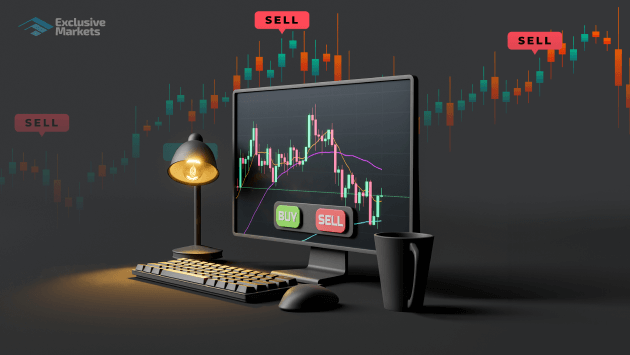
In the fast-paced world of forex trading, success often hinges on using the right indicators. Indicators help traders analyze market trends, identify entry and exit points, and manage risk effectively. Whether you are a seasoned trader or a novice, familiarizing yourself with the best indicators can significantly improve your trading performance. If you’re looking for a reliable platform to trade forex, check out best indicators for forex trading Trading Platform VN for an extensive range of tools and features. This article explores the best indicators for forex trading, their uses, and how to apply them in your trading strategy.
1. Moving Averages
Moving averages are one of the most commonly used indicators in forex trading. They smooth out price data to identify trends over a specific period. The two main types of moving averages are the Simple Moving Average (SMA) and the Exponential Moving Average (EMA).
Simple Moving Average (SMA): This indicator calculates the average price over a specified number of periods. For example, a 50-day SMA will average the closing prices of the last 50 days.
Exponential Moving Average (EMA): Unlike the SMA, the EMA gives more weight to recent prices, making it more responsive to new information. Traders often use a combination of both SMA and EMA to confirm trends.
Moving averages help traders determine when to buy or sell. If the price crosses above the moving average, it may signal a bullish trend, while a price drop below the moving average may indicate a bearish trend.
2. Relative Strength Index (RSI)
The Relative Strength Index (RSI) is a momentum oscillator that measures the speed and change of price movements. It ranges from 0 to 100, with readings above 70 indicating an overbought condition and readings below 30 indicating an oversold condition.
Traders use RSI to identify potential reversal points in the market. If the RSI crosses above 30, it may signal that the asset is gaining momentum and could be a buying opportunity. Conversely, if the RSI falls below 70, it may indicate a bearish trend.
RSI can be particularly effective when combined with other indicators. For example, if the price action shows an uptrend and the RSI is also increasing, it can validate the bullish sentiment.

3. Moving Average Convergence Divergence (MACD)
The Moving Average Convergence Divergence (MACD) is a trend-following momentum indicator that shows the relationship between two moving averages of a security’s price. The MACD is calculated by subtracting the 26-period EMA from the 12-period EMA.
Traders look for signal lines and crossovers within the MACD to identify potential buy and sell signals. A bullish signal occurs when the MACD crosses above the signal line, while a bearish signal is indicated when the MACD crosses below the signal line.
In addition to crossovers, traders also analyze the MACD histogram, which represents the difference between the MACD line and the signal line. A growing histogram suggests increasing momentum, while a declining histogram indicates weakening momentum.
4. Bollinger Bands
Bollinger Bands are a volatility indicator that consists of a middle band (SMA) and two outer bands that are standard deviations from the SMA. The width of the bands varies based on market volatility. When the bands contract, it signals a potential increase in volatility, while expansion indicates a period of low volatility.
Traders often use Bollinger Bands to identify overbought or oversold conditions. When the price touches the upper band, it may indicate that the asset is overbought, presenting a selling opportunity. Conversely, a price touching the lower band suggests an oversold condition and potential buying opportunity.
5. Fibonacci Retracement
Fibonacci retracement is a popular tool among traders for identifying potential levels of support and resistance. The key Fibonacci levels are 23.6%, 38.2%, 50%, 61.8%, and 100%. Traders apply these levels by drawing a line between a high and low point on the price chart.
During a trend, prices usually retrace some of their previous moves before continuing in that direction. By identifying Fibonacci levels, traders can set potential entry points and stop-loss orders. When the price approaches these levels, traders watch for signs of reversal or continuation.
6. Stochastic Oscillator

The Stochastic Oscillator is another momentum indicator that compares a particular closing price of a security to a range of its prices over a specific period. The oscillator produces two lines: %K and %D. The %K line shows the current closing price relative to the price range, while the %D line is a moving average of the %K line.
Typically, readings above 80 indicate overbought conditions, while those below 20 indicate oversold conditions. Traders often look for divergence between the Stochastic Oscillator and the price action to spot potential reversals.
7. Average True Range (ATR)
Average True Range (ATR) is a volatility indicator that measures market volatility by decomposing the entire range of an asset price for that period. It helps traders understand how much an asset is likely to move in a certain time frame, aiding in setting stop-loss levels and position sizing.
ATR doesn’t provide market direction; instead, it focuses on the degree of price movement. High ATR values suggest increased volatility, while low ATR values indicate a stable market. Traders may choose to increase their position sizes when the ATR is high to take advantage of significant price movements.
8. Volume Indicator
Volume provides essential insights into market strength or weakness. Analyzing volume alongside price movements helps traders gauge whether a price trend is likely to continue. Generally, significant price moves accompanied by high volume are considered more reliable than those with low volume.
There are several volume indicators, including On-Balance Volume (OBV) and Chaikin Money Flow (CMF). OBV uses volume flow to predict changes in stock price, while CMF measures the buying and selling pressure for a set period.
Conclusion
Understanding and effectively using indicators can significantly enhance your forex trading strategy. It’s essential to remember that no single indicator is foolproof; traders often combine multiple indicators to increase their odds of success. The best approach is to test different indicators and develop a personalized trading strategy that suits your style and objectives.
Whether you’re using moving averages, RSI, MACD, or other indicators, consistency, discipline, and risk management are vital. By honing your skills and utilizing these tools, you can become a more informed and successful forex trader.
